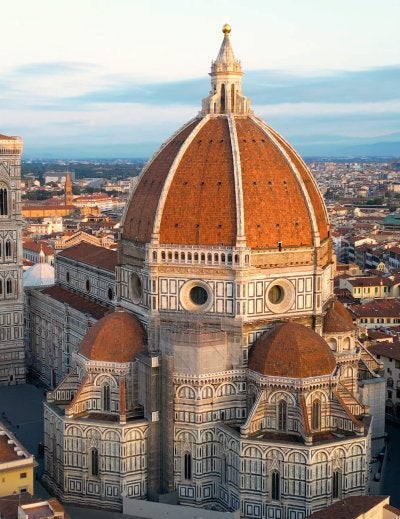
Travel Guide to Palermo’s Norman Palace
The Norman Palace, or Palazzo dei Normanni, is one of Palermo’s most remarkable landmarks and a true symbol of Sicily’s cultural diversity. Rising above the city, this impressive palace blends Arab, Norman, Byzantine, and Spanish influences, mirroring the island’s long and complex history. As one of Europe’s oldest royal residences, it has been a center of power for many rulers and today serves as the home of the Sicilian Regional Assembly. Recognized by UNESCO as part of the “Arab-Norman Palermo and the Cathedral Churches of Cefalù and Monreale” site, it remains one of Sicily’s must-see attractions. For more inspiration on what to visit, check out this guide to things to do in Sicily.
A Journey Through History
The origins of the Norman Palace date back to the 9th century, when Sicily was under Arab control. It was originally built as a fortress, or “Qsar,” between the rivers Kemonia and Papireto, possibly on the site of a former Phoenician stronghold.
When the Normans arrived in Palermo in 1072, they transformed the old fortress into a royal palace. King Roger II, who was crowned in 1130, turned it into the heart of his court and a place where Arab, Byzantine, and Latin influences merged. One of his most important contributions was commissioning the Palatine Chapel, completed in 1140, which remains one of the highlights of the palace today.
Over the following centuries, each ruling dynasty left its mark. The Swabians maintained the palace’s political importance, while the Spanish viceroys in the 16th century renovated it extensively, adding new fortifications and a Renaissance-style façade. Later, the Bourbons continued the decorative work. Since 1946, the Norman Palace has housed the Sicilian Regional Assembly, continuing its legacy as a political center.
Architectural Brilliance
The Norman Palace is a masterpiece of Arab-Norman architecture, a unique style that combines Islamic, Byzantine, and Western design elements. Its exterior walls and towers hint at its origins as a defensive fortress, while the richly decorated interiors reveal its evolution into a royal residence.
Successive rulers expanded and redesigned the palace, adding courtyards, chapels, and grand halls. Renaissance and Baroque influences mix with medieval foundations, creating an architectural blend that perfectly reflects Sicily’s multicultural history.
Highlights of the Norman Palace
Cappella Palatina (Palatine Chapel)
The Palatine Chapel is considered the crown jewel of the Norman Palace. Built under Roger II in 1132 and consecrated in 1140, it is famous for its glittering golden mosaics that depict biblical scenes and the striking image of Christ Pantocrator. The chapel’s design combines Arab, Byzantine, and Norman influences, with intricate muqarnas ceilings, marble inlays, and geometric patterns. Greek, Arabic, and Latin inscriptions remind visitors of the peaceful coexistence of cultures that once defined Sicily.
The King’s Apartments
These rooms showcase the lavish lifestyle of the Norman kings, featuring elaborate frescoes, wood carvings, and original furnishings.
Sala di Ruggero II (Roger II’s Hall)
Originally used as a royal bedroom, this hall is decorated with mosaics of animals and hunting scenes that reveal Byzantine artistic influences.
Sala dei Venti (Hall of Winds)
Known for its refined details and mosaic decorations.
Sala d’Ercole (Hercules Hall)
Added during the Bourbon period, this grand hall features frescoes of Hercules and today serves as the home of the Sicilian Regional Assembly.
Astronomical Observatory
Created in the 18th century, the palace’s observatory is one of the oldest in Europe and still attracts visitors interested in the history of science.
Courtyards and Archaeological Finds
The palace’s courtyards, such as the Fountain Courtyard (1584) and Maqueda Courtyard (1600), were added by the Spanish viceroys and display Renaissance and Baroque elements. Beneath the palace, visitors can see remains of a Punic settlement discovered in 1984, offering a glimpse into Palermo’s ancient past.
Cultural and Political Significance
Throughout history, the Norman Palace has symbolized power and cultural exchange in Sicily. It served as the residence of Norman kings, Spanish viceroys, and other rulers who shaped the island’s history.
Its inclusion on the UNESCO World Heritage list highlights its importance as a site where different civilizations—Western, Islamic, and Byzantine—came together. Today, as the headquarters of the Sicilian Regional Assembly, the palace continues to play a vital role in Sicily’s political life.
Visitor Information
Location: Piazza del Parlamento, 1, 90129 Palermo, Sicily
Opening Hours: Monday to Saturday, 8:30 am–4:30 pm; Sunday, 8:30 am–12:30 pm. Hours and access can vary, so it’s best to check the official website before visiting.
Tickets: Full access tickets cost around €15–€19 and include entry to the palace, Palatine Chapel, and gardens. Booking in advance is recommended, especially during peak season.
Tours: Guided tours, usually lasting about 90 minutes, are available in English.
Visitor Tips: Dress modestly when entering the chapel. Photography is allowed in most areas, but flash is not permitted.
Accessibility: The palace is wheelchair accessible.
Nearby Attractions
The Norman Palace is within walking distance of many of Palermo’s most famous landmarks. The Palermo Cathedral, another UNESCO World Heritage Site, is just a few minutes away. Other highlights on the Arab-Norman route include the Church of San Cataldo, the Church of San Giovanni degli Eremiti, and the Church of Santa Maria dell’Ammiraglio (Martorana). The Castle of Zisa, the Admiral’s Bridge, and the colourful Ballarò Market are also nearby.
FAQs
Why is the Norman Palace significant?
It is one of Europe’s oldest royal residences and a key example of the Arab-Norman architectural style that defines Sicily’s cultural identity.
What is the Cappella Palatina?
The Palatine Chapel is the palace’s most famous feature, decorated with golden mosaics and architectural details that combine Arab, Norman, and Byzantine artistry.
Is the Norman Palace part of a UNESCO site?
Yes, it is part of the “Arab-Norman Palermo and the Cathedral Churches of Cefalù and Monreale” World Heritage Site.
How long should I plan for a visit?
Allow at least two hours to explore the palace, chapel, and courtyards comfortably.
Can I take photos inside?
Photography is allowed, though flash use is restricted inside the chapel.

